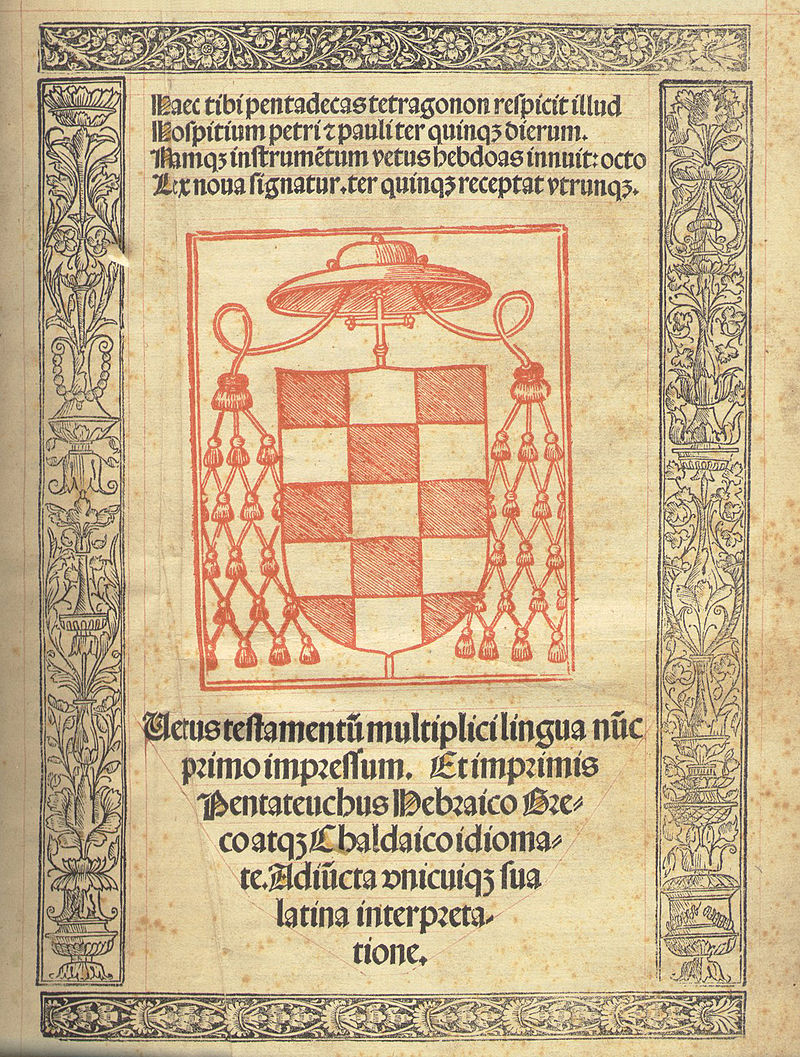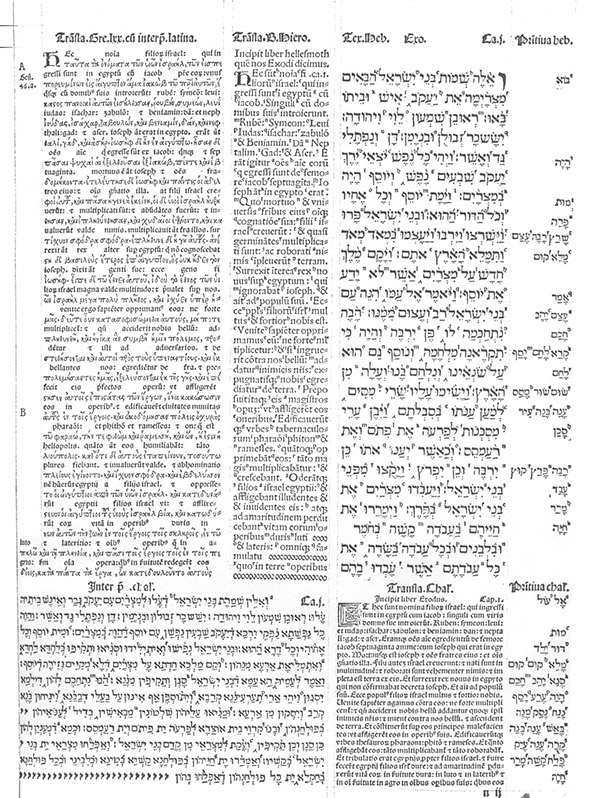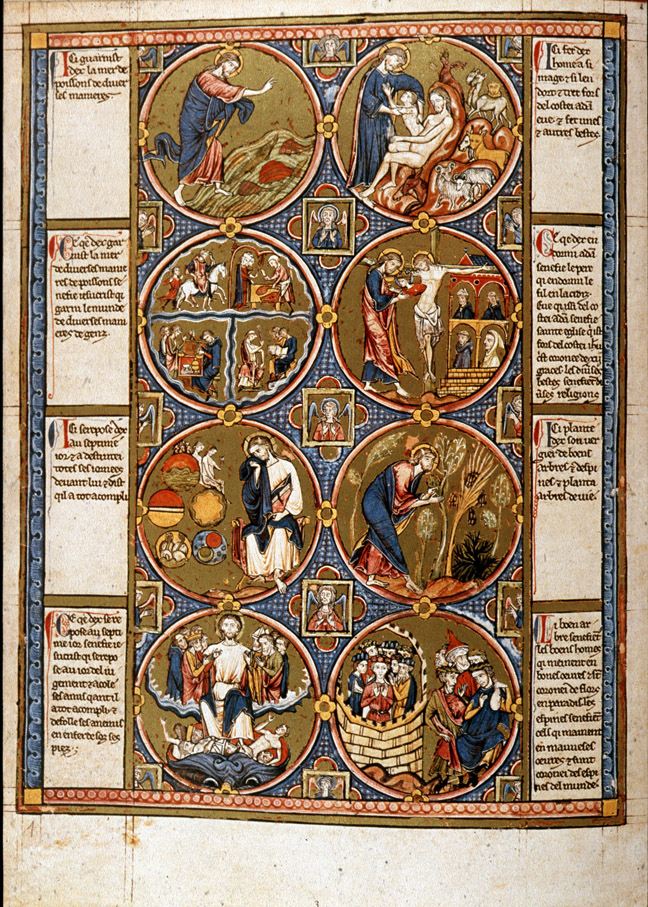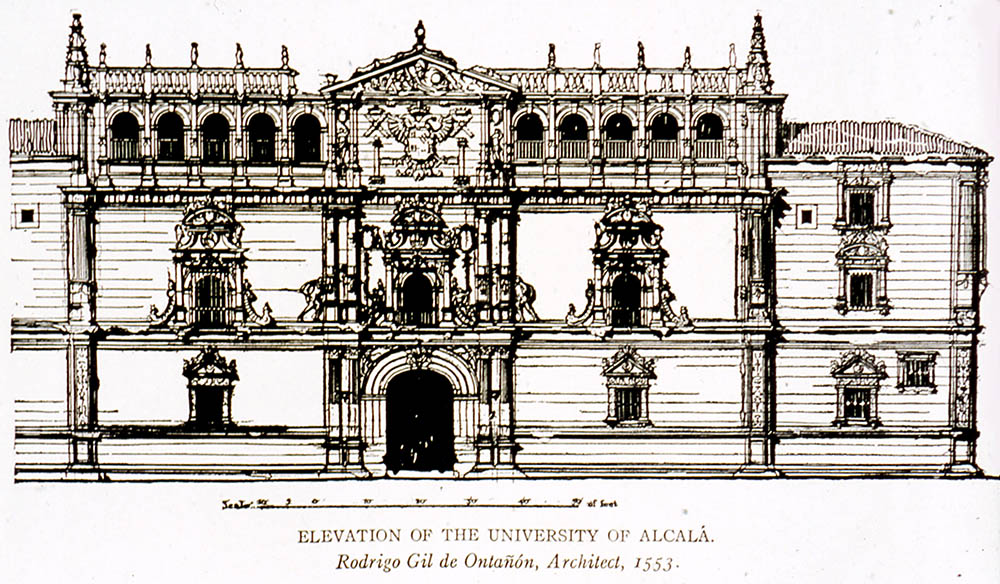Pre-Modern Bibles: From the Dead Sea Scrolls to the Complutensian Polyglot Bible
August 2018 – March 2019
To view a digital copy of the exhibition catalog, please click here.
Biblical texts have changed in their format, in modes of interpretation, and in ways of presentation over the millennia.
 Complutensian polyglot Bible (Rome, Library of the Society of Jesus) Frontispiece,
1517‒20.
Complutensian polyglot Bible (Rome, Library of the Society of Jesus) Frontispiece,
1517‒20.From August 18, 2018 to March 3, 2019, the Museum of Texas Tech University will host the Pre-Modern Bibles: From the Dead Sea Scrolls to the Complutensian Polyglot Bible, the largest collection of original and facsimile biblical manuscripts ever assembled in West Texas.
The exhibition illustrates the evolution of the physical Bible, the development of scholarly methods of biblical analysis, and the refinement of multiple ways to convey biblical learning, often to people of limited literacy. The highlight of the exhibition is the creation, in Spain at the end of the Middle Ages, of the Complutensian Polyglot Bible with its elaborate multilingual printing press fonts.
The Complutensian Polyglot can be traced back to a university in north-central Spain, the Universidad Complutense at Alcalá de Henares which relocated to Madrid during the 19th century.
 Complutensian polyglot Bible (Rome, Library of the Society of Jesus) 1517–1520
Complutensian polyglot Bible (Rome, Library of the Society of Jesus) 1517–1520This renaissance university was the creation of Cardinal Francisco Ximénes (1436 ‒ 1517), a former hermit who became the chaplain of Christopher Columbus's patroness Queen Isabella of Castille. Ximénes was a statesmen and reformer who believed that a proper understanding of the Bible could lead to a reformed Christianity. To that end he diverted whatever funds he could gather into his new university whose major project would be to create an edition of the Bible that, thanks to the new printing press technology, could make the word of God available in all the major biblical source languages.
The first part of the exhibit will attempt to show how the material Bible came to exist as it does. The second part of the exhibit attempts to reveal not only the sophistication of pre-modern biblical scholarship but also how it relates to academic traditions today.
The final section of the exhibition will be devoted to the Complutensian Polyglot Bible, whose pages are laid out to include bible passages in four columns in different languages: Hebrew, Greek, Latin, and Aramaic. The Complutensian Polyglot Bible will be presented as the culmination of a long tradition of themes related to multilingual, cross cultural, biblical scholarship, which will and demonstrate how the future was transformed by the technology of the printing press.
 Vienna Moralized Bible (Vienna, ÖNB. Cod. 2554) Genesis scenes, c. 1225.
Vienna Moralized Bible (Vienna, ÖNB. Cod. 2554) Genesis scenes, c. 1225.The exhibition features a variety of bibles and their colorful illuminations that focus on biblical scholarship over 1,000 years and its relationship to the development of western civilization in the middle ages.
The exhibition is co-curated by Janis Elliott, associate professor of art history and John Howe, professor of history, both of Texas Tech.
Financial support comes not only from the Museum of Texas Tech but also from the Helen Jones Foundation, a Humanities Texas Major Grant for a Community Project, and a Civic Lubbock Cultural Arts Grant.
Among the co-sponsors of the exhibition are Texas Tech University, the Museum of Texas Tech, and The Remnant Trust. Other materials will be furnished by the Lanier Theological Library, the Harry Ransom Center of the University of Texas at Austin, and the Sarah Campbell Blaffer Foundation of the Museum of Fine Arts Houston. The Library and Southwest Collection of Texas Tech, and the libraries of Abilene Christian, Baylor, and Western Michigan Universities all are providing loans of facsimile manuscripts. Many of the manuscripts included in the exhibition are facsimiles because manuscripts, which are hand-written and painted, are unique and too precious to travel from their home libraries.
The link between the Complutensian polyglot Bible and Texas Tech University
The Complutensian Polyglot Bible and Texas Tech University's architecture can both
be traced back to the same source, a university in north-central Spain, the Universidad
Complutense at Alcalá de Henares which relocated to Madrid during the 19th century.

This renaissance university was the creation of Cardinal Francisco Ximénes (1436 ‒ 1517), a former hermit who became the chaplain of Christopher Columbus's patroness Queen Isabella of Castille.
In 1923, architect William Ward Watkin, seeking a suitable architectural style for a new university on the High Plains of Texas, looked to the High Plains of Spain, the region of the Extremadura, and modeled Texas Tech's first building, the Administration Building, on the university at Alcalá.
 The program is made possible in part by a grant from the Helen Jones Foundation, Inc;
Humanities Texas, the state affiliate of the National Endowment for the Humanities;
and a Civic Lubbock Cultural Arts Grant.
The program is made possible in part by a grant from the Helen Jones Foundation, Inc;
Humanities Texas, the state affiliate of the National Endowment for the Humanities;
and a Civic Lubbock Cultural Arts Grant.
Museum at Texas Tech University
-
Address
3301 4th Street, Lubbock, TX 79415 -
Phone
806.742.2490 -
Email
museum.texastech@ttu.edu
